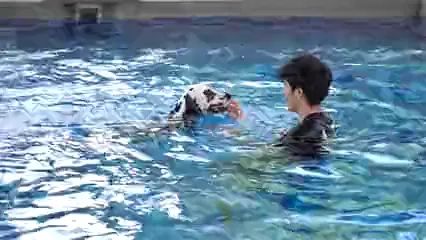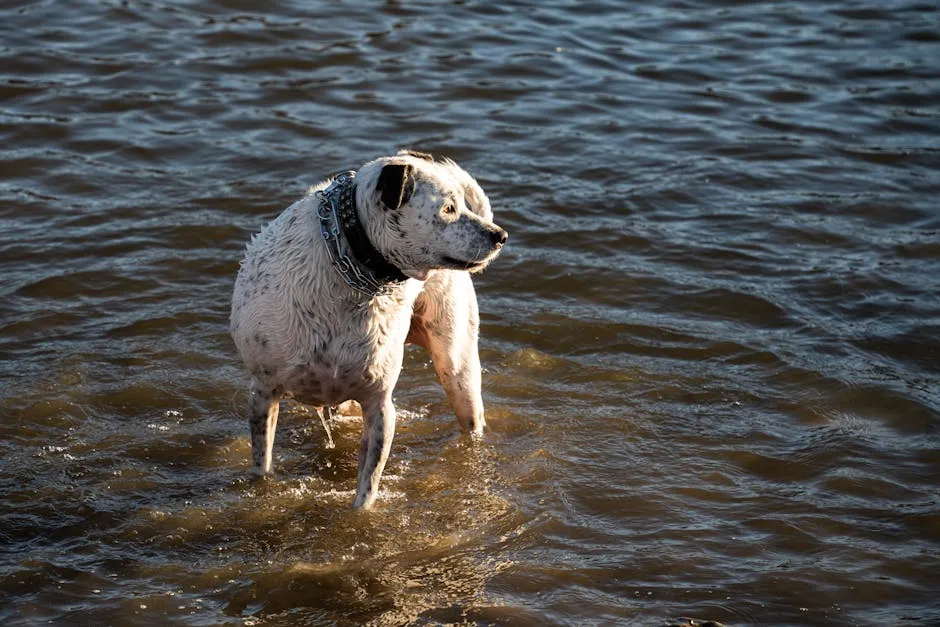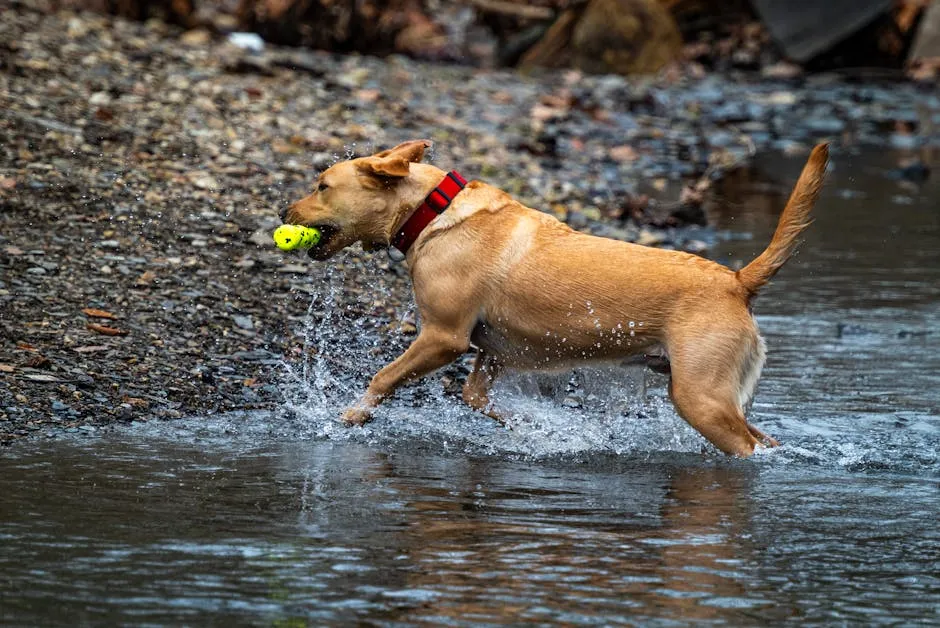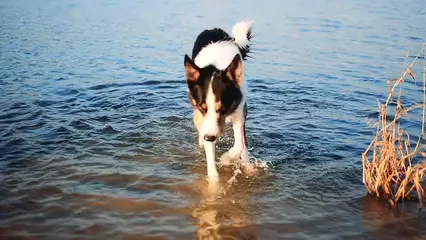Introduction
Introducing your dog to water can be a delightful experience or a daunting challenge, depending on how you approach it. Picture this: your furry friend, looking at a sparkling pool or a shimmering lake, tail wagging with excitement, yet hesitating to leap in. Just like humans, dogs have varying comfort levels with water. Some are natural swimmers, while others may view it as an alien landscape. The key to a successful introduction lies in patience, positive reinforcement, and a splash of fun. In this comprehensive guide, we’ll explore the best practices for ensuring your dog learns to love water while keeping safety at the forefront. So, grab your towel and a few treats because it’s time to make a splash—safely!
For effective strategies on how to encourage your dog, consider exploring effective positive reinforcement techniques for stubborn dogs.
Best Practices for Introducing Your Dog to Water
1. Assessing Your Dog’s Comfort Level
Before plunging into the pool, take a moment to assess your dog’s comfort level with water. Dogs can have wildly different reactions. Some might be ready to dive in, while others may treat water like a mysterious swamp. Breeds like Labradors and Newfoundlands are natural water lovers. They often jump in at any opportunity. In contrast, short-legged breeds such as Bulldogs or Pugs might struggle due to their body structure. Even if your dog is not a swimmer, it’s essential to introduce them to water safely. Start with gentle exposure and observe any signs of anxiety. If they hesitate, don’t panic; patience is your best friend here.
Always remember to approach this introduction like a game. You want to create a fun, inviting atmosphere. That means no tossing your pup into the water like a rag doll. Instead, let them sniff, explore, and even dip their paws in without pressure. The goal is to build a positive association with water, not to create a watery horror story.

Speaking of safety, consider getting an Outward Hound Granby Splash Dog Life Jacket. This jacket offers excellent buoyancy for dogs who may not be as confident in the water. It’s a must-have for those initial splashes!
2. Early Exposure to Water
Starting early can make a world of difference in how your dog feels about water. Ideally, introduce your pup to water around 8 weeks of age. Early exposure helps them develop a comfort level that will serve them well. You can begin by allowing them to play in a shallow bowl or a kiddie pool filled with just a couple of inches of water. This creates a safe environment for them to explore.
Controlled, playful activities are key here. Use toys to entice them into the water. Toss a favorite ball or squeaky toy a short distance to see if they’ll go after it. Treats can also be a powerful motivator. Once they associate water with fun, you’ll be well on your way to having a water-loving dog. For those squeaky toy lovers, check out the ZippyPaws Squeaky Dog Toy. It’s perfect for enticing your pup to splash around!

3. Choosing the Right Location
Selecting the right location for introducing your dog to water is crucial. Avoid busy beaches or lakes with strong currents; instead, consider a kiddie pool or a calm, shallow area like a quiet lake. Shallow, warm water is ideal for timid pups. It allows them to touch the bottom, giving them a sense of security.
Additionally, be mindful of the environment. A clean area free from debris is essential. Your pup doesn’t need to be navigating through weeds or rocks on their first dip. Calm surroundings will help your dog feel relaxed and less intimidated. A chaotic environment can lead to anxiety, making the introduction harder than it needs to be.

4. Introducing Water Gradually
When it comes to introducing your dog to water, gradual is the name of the game. Start in a shallow area where your dog can stand comfortably. This allows them to explore without feeling overwhelmed. Use toys to encourage interaction. Toss a ball just in front of them, prompting them to take that first brave step into the water.
Positive reinforcement is vital. Offer treats and praise for every small step they take toward the water. If your dog seems hesitant, don’t rush them. Instead, try walking alongside them, showing them it’s safe. Encourage them gently to paddle back to shore if they venture out a bit deeper. This creates a sense of security and builds their confidence.

5. Safety Gear: Life Jackets and Floatation Devices
Safety should always come first. Consider investing in a life jacket designed for dogs, especially for those less confident in the water. A well-fitted life jacket provides extra buoyancy, making swimming easier and safer. Look for one with a handle on top; it’s handy for quick rescues! You might want to check out the Paws Aboard Doggy Life Jacket for extra safety in the water.
When fitting a life jacket, ensure it’s snug but not too tight. You want your dog to feel comfortable moving around. Introduce the jacket on dry land first, rewarding them for wearing it. This helps them associate the life jacket with positive experiences before hitting the water.
6. Engaging and Fun Activities
Make water time enjoyable! Engaging activities can transform a potentially scary experience into a fun-filled adventure. Games like fetch are perfect for this. Toss a toy into the water and encourage your dog to retrieve it. The excitement of the game can push through any initial hesitation. Consider using the Chuckit! Ultra Ball Dog Toy for a splash-tastic game of fetch!
Use treats and praise liberally. Celebrate every small victory, whether they dip a paw in or swim to retrieve a toy. It’s all about making positive memories in the water. Remember, the goal is to foster a love for swimming, not to make it a chore. Building those joyful associations will keep your pup eager for more splashes and sunshine.

7. Monitoring Your Dog’s Energy and Safety
As your dog begins to swim, keep a close eye on their energy levels. Swimming can be exhausting, especially for beginners. Monitor their behavior; if they start to tire, it’s time for a break. Look for signs such as excessive panting or reluctance to swim.
Short sessions are best. Start with just a few minutes and gradually increase the time as your dog becomes more comfortable. Always supervise closely, even if they seem like seasoned swimmers. Accidents can happen in an instant, so remain vigilant. And if you’re worried about shedding everywhere, consider the FURminator deShedding Tool for Dogs to keep your house fur-free!

8. Teaching Exits and Water Safety
It’s essential for your dog to know how to exit the water safely. Teach them where the steps or ramps are located. You can do this by leading them to the exit point regularly during playtime. If they’re ever in a situation where they need to exit quickly, they’ll know exactly where to go.
Creating a safe environment around pools and lakes is equally important. Always supervise your dog when they’re near water, and never leave them unattended. If you have a pool, ensure it’s securely fenced to prevent accidental entries. For added peace of mind, check out the PetSafe Wireless Pet Containment System to keep your furry friend safe!

FAQs
Can all dogs swim?
Not every dog is a natural swimmer. While breeds like Labradors and Newfoundlands often take to water with ease, others may struggle. Many factors influence a dog’s swimming ability. Body structure plays a vital role; for instance, breeds with heavier bodies like Bulldogs may find swimming challenging. The introduction to water should be gradual. Starting in shallow, warm water allows dogs to build confidence without feeling overwhelmed. Never toss your pup into the deep end, as this can create fear. Instead, encourage exploration at their own pace.
What if my dog is afraid of water?
If your dog shows fear of water, take it slow. Start with shallow puddles or kiddie pools, where they can safely explore. Use treats and toys to create positive associations. Gradually increase exposure as your dog becomes more comfortable. You can also join them in the water to show it’s a fun place to be. Patience is key! If your dog still hesitates, consider taking a break and trying again later. Each small step counts toward building their confidence.
Is it safe for older dogs to swim?
Swimming can be beneficial for senior dogs, providing gentle exercise that helps with mobility. However, always consult your vet before introducing swimming to older pups. Take extra care to monitor water temperature; cold water can be uncomfortable for aging joints. When swimming, ensure they wear a life jacket for added safety. Supervise closely, and keep swimming sessions short to avoid fatigue. Older dogs may need more breaks, so listen to their needs and adjust accordingly.
How can I tell if my dog is tired while swimming?
Signs of fatigue in swimming dogs can include excessive panting, slowing down, or struggling to stay afloat. If your dog seems to lose interest or begins to swim in circles, it’s time for a break. Monitoring energy levels is essential, especially during play. Always be prepared to call your dog back to shore if they show signs of exhaustion. Keep swimming sessions short, especially for beginners, to prevent overexertion. A well-timed break can ensure a positive experience.
Should I use a life jacket for my dog?
Yes, using a life jacket is a smart move, especially for dogs new to swimming. Life jackets provide extra buoyancy, making swimming easier and safer. They are particularly helpful for less confident swimmers or senior dogs. When selecting a life jacket, ensure it fits snugly but allows for movement. Look for features like a handle on top for easy lifting in emergencies. Introducing the life jacket on dry land first can help your dog get used to it without the stress of water.
Please let us know what you think about our content by leaving a comment down below!
Thank you for reading till here 🙂 And don’t forget to grab some Zuke’s Mini Naturals Training Dog Treats for all those great training moments!
All images from Pexels





